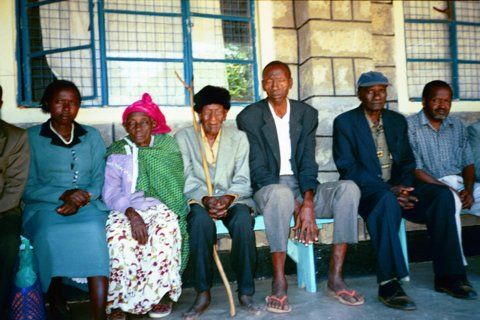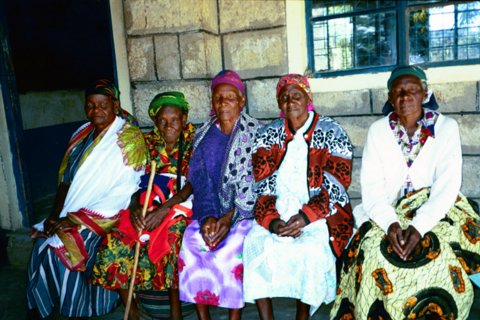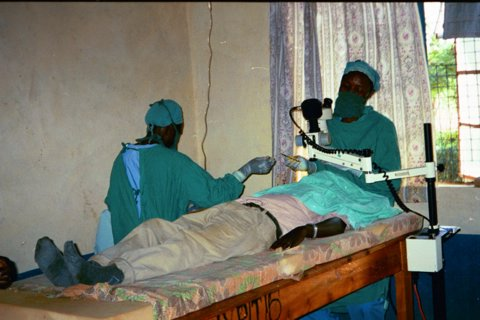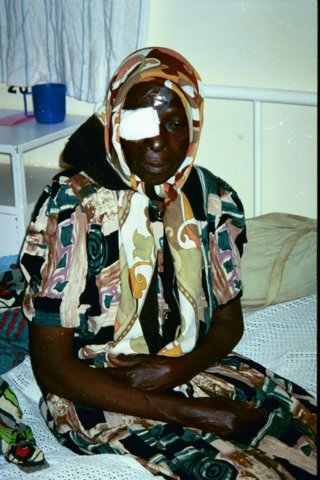
"Seeing" History Made in Kenya All of us in the "seeing" business know that sight is precious and fragile. As president of World Blindness Outreach (WBO), I have been leading eye mission trips to third-world countries for almost 14 years. The tragedy of avoidable blindness keeps us serving people who do not have access to the kinds of health care that Americans take for granted.  Recently, several colleagues and I traveled to our 20th country on a medical mission. It was, however, our first trip to Kenya, and it provided yet another moving and gratifying experience. Just ask first-time participant Teresa Risley, retired optician of New Orleans, Louisiana. "This was a life-changing experience," says Teresa. "Since returning, I have reordered my priorities, treasure simple things like never before, and want to do more eye mission trips!" A long-time Rotary Club member, Teresa is the Avoidable Blindness Task Force chair for her Rotary district. "We expressed an interest in partnering with vision groups going to Africa, and they paired me with Dr. Alley," she explains. "I was actually the non-medical coordinator for the team." Rotary International, our partner for this trip, contributed $35,000 to subsidize the materials needed to perform 1,000 cataract surgeries in Kenya. The main locations were two Nairobi hospitals, the Kikuyu Eye Center and the Lions Sight First Eye Hospital. Normally we take an entire medical team, as well as all supplies and equipment. Because this trip was a true cooperative effort, most of the medical staff was Kenyan. Dr. Dennis Pratt, a retired Navy ophthalmologist from Norfolk, Virginia, was the only other American doctor. Journalist Carol Wolfram of The Times-Picayune in New Orleans joined us for her first such trip. Dr. Pratt, who started working with WBO in 1995, now goes on eye mission trips whenever he can. "I had learned of Dr. Alley’s work and even covered his practice in 1994 during a mission trip," explains Dr. Pratt. "I was hooked after my first time!"  Carol Wolfram now knows why Dr. Pratt and others return on more eye mission trips. "At the hospitals, we could see the needs – and the results – were great," she says. "But the most memorable part of the trip was the day we traveled outside the city to create an eye camp in a remote rural area. I will never forget those people." What Carol is talking about was our visit to a small village called Mwala. We drove several hours on paved and dirt roads to a small school building surrounded by waiting patients. Some of them were only in their twenties and already blinded by cataracts. "I had no idea how we were going to operate there," said Teresa. "The room had dirty, chipped concrete walls and floors, open windows, and bugs all around. I watched in amazement as this dirt-laden room was changed into a surgery suite." You must be flexible on these trips, using what is available to create an operating room. Boiling water over a butane burner became the autoclave, and a rope thrown over the ceiling rafters supported the IV bottles. It all worked together so well, as did our Kenyan-American surgery team. Teresa and Carol supported the eye camp by moving patients in and out of surgery. "I know many had walked for hours and hours to get there and hadn’t had anything to eat, yet they sat very calmly waiting their turn," says Carol. "Many told us what they looked forward to," adds Teresa. "One woman just wanted to cook and care for her family as before. An unmarried man in his twenties was an artist and a tradesman, but his early blindness stopped his work and his art. Above all, he would be able to find a wife and have a family because now he could provide for them. " "I remember one middle-aged man who shook his ever-present cane in the air and said he couldn’t wait to throw it away," adds Dr. Pratt. Both Dr. Pratt and I enjoyed working alongside the Kenyan doctors. They were gracious people and skilled surgeons – true inspirations! For example, in America we normally use a phakoemulsification machine to perform cataract surgeries, but few medical facilities in these areas can afford $60,000 for one.  As a credit to their talent, these doctors were using extracapsular extraction with posterior chamber lens implants to produce excellent results. Frequently, they were able to remove cataracts from a six-millimeter scleral tunnel incision that did not need sutures. Amazing! Although the Lions Sight First Eye Hospital had recently received a phako, they had no training on how to use it. We trained them during our two days at the hospital and know that they will teach others. Dr. Tony Walia, director of Ophthalmology at Kikuyu Eye Center where we also spent two days, and Dr. Dunera Alako further inspired us as superb physicians providing compassionate, expert care. Together, we performed close to 500 surgeries that week. The Kenyan doctors will use the supplies we brought to perform the 500 more.  Although the needs are still so great at the end of a visit, we know we helped change lives. As Director of Ophthalmology Dr. Fayaz Kahn said during the first cataract surgery performed at the Lions hospital using phakoemulsification with a foldable lens implant, "History was made here today!" Dr. Albert A. Alley, a diplomate of the American Board of Ophthalmology, practices in Lebanon, PA, and is a clinical assistant professor of ophthalmology at Penn State University’s College of Medicine at the Hershey Medical Center. He is co-founder and president of World Blindness Outreach, Inc., a humanitarian organization that supports eye missions to treat correctable blindness and preventable eye diseases among indigent peoples throughout the world. You can contact Dr. Alley at World Blindness Outreach, Inc., 1510 Cornwall Road, Lebanon, PA 17042 or at (717) 273-0662. Send email to wbo@nbn.net. Visit the World Blindness Outreach Web site at www.worldblindnessoutreach.com.
|




